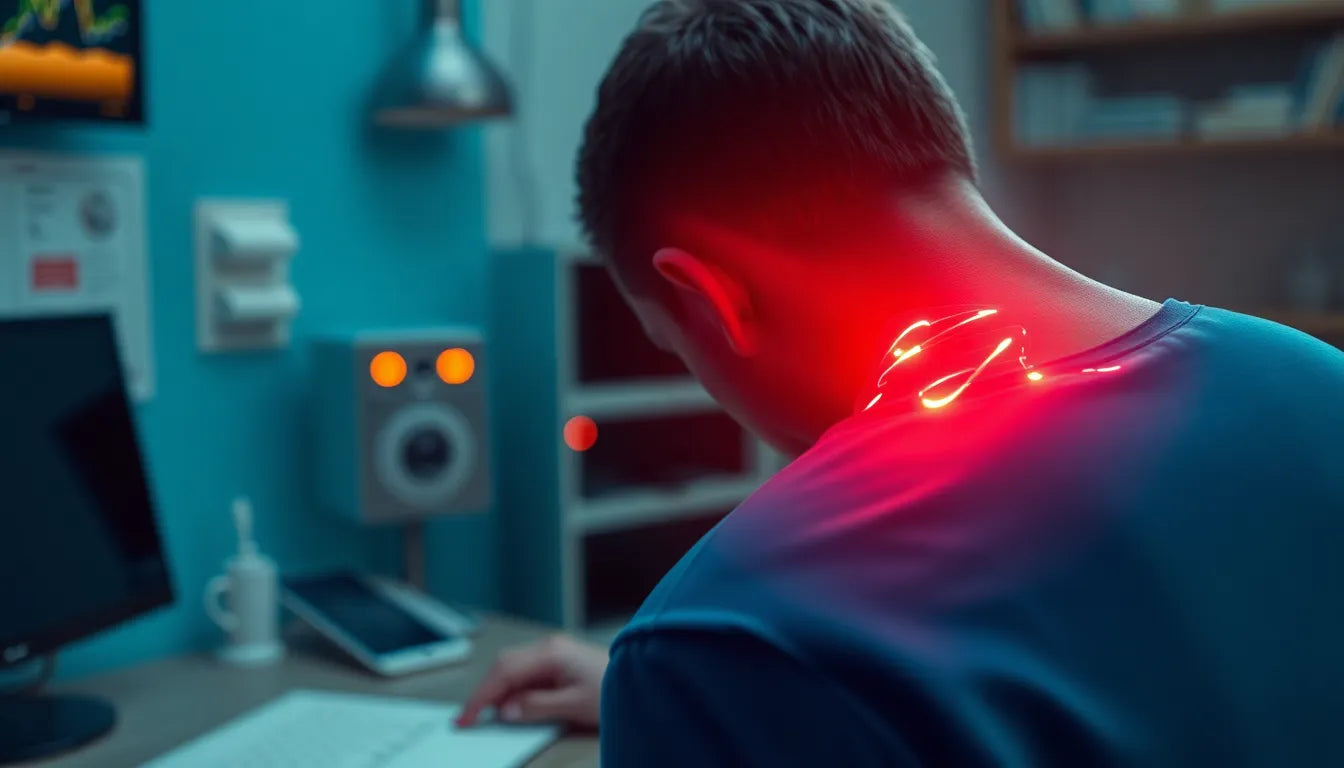Understanding a herniated disc and the journey to recovery is crucial for anyone experiencing this common yet painful condition. A herniated disc occurs when the soft, gel-like center of a spinal disc pushes through a crack in the tougher exterior casing. This can happen due to injury or degeneration over time. The impact on daily life can be significant, with symptoms ranging from severe back pain to numbness or weakness in the limbs, depending on the location of the herniation.
For those dealing with a herniated disc, one of the most pressing questions is often: how long does it take to heal? The answer isn't straightforward, as the healing process can vary widely from person to person. Setting realistic expectations about recovery time is essential for managing both physical and emotional well-being during this period. Understanding the factors that influence healing can help in setting these expectations and planning for the journey ahead.
The healing journey: factors influencing recovery time
Several factors can influence how long it takes for a herniated disc to heal. Age plays a significant role, as younger individuals often recover more quickly due to better overall health and the body's natural resilience. The severity of the herniation is another critical factor; a minor bulge may resolve faster than a more severe protrusion. Additionally, one's overall health, including fitness level and lifestyle choices, can significantly impact recovery time.
For many, the concern isn't just about the duration of recovery but also about when they can expect to return to normal activities. This timeline can vary, with some individuals experiencing relief within weeks, while others may take months to fully recover. It's important to remember that while pain relief might occur relatively quickly, full structural healing of the disc can take much longer.
Each person's healing journey is unique, and understanding the variability in recovery times can help manage expectations. By acknowledging the factors that influence healing, those affected by a herniated disc can better navigate their path to recovery, making informed decisions about their treatment and lifestyle adjustments.
Factual timeline: how long does a herniated disc take to heal?
Understanding the timeline for healing from a herniated disc is crucial for setting realistic expectations and planning your recovery journey. While each individual's recovery can vary, there are common phases that most people experience. Initially, the first one to two weeks are often marked by severe pain and muscle spasms. During this time, it's essential to manage pain effectively and avoid activities that may exacerbate the condition.
As you move into the gradual improvement phase, typically between two to six weeks, many people begin to notice a decrease in pain and an improvement in mobility. This period is critical for gently increasing activity levels and incorporating physical therapy exercises to strengthen the back and support healing.
From six to twelve weeks, you may reach a plateau or stabilization phase, where pain persists primarily during certain activities. Maintaining a consistent exercise regimen and adhering to any prescribed physical therapy can help manage symptoms and prevent setbacks during this stage.
The long-term healing phase, which can last from three to twelve months or more, involves occasional discomfort and potential flare-ups. It's important to continue with lifestyle modifications and exercises to support ongoing recovery. For some, complete healing, where the disc material is fully absorbed, can take anywhere from five to twenty-two months, with an average of around thirteen months.
Factors influencing recovery from a herniated disc
Several factors can significantly influence the recovery time from a herniated disc. Age is a notable factor, with younger individuals often experiencing faster recovery due to better overall health and more robust healing processes. The severity of the disc herniation also plays a crucial role; more severe cases may require longer healing times.
Physical activity and overall health are equally important. Individuals who maintain a healthy lifestyle, including regular exercise and a balanced diet, may experience a more efficient recovery process. Moreover, medical interventions such as physical therapy and, in some cases, surgery can significantly impact the healing timeline.
Insights from top resources on herniated disc recovery
Insights from reputable sources like HealthCentral and Crush Back Pain provide valuable perspectives on the recovery process. HealthCentral emphasizes the importance of understanding that symptom improvement often occurs within the first few weeks, while complete structural healing can take much longer. They highlight the distinction between pain relief and actual disc repair.
Crush Back Pain delves into research literature, focusing on the necessity of ongoing movement and exercise for sustained recovery. They stress that while pain may subside within six to twelve weeks, the anatomical healing of the disc can extend up to twenty-two months. This highlights the importance of patience and adherence to a structured recovery plan.
Spine MD offers a staged recovery approach, providing a clear roadmap for each phase of healing. Their advice includes specific exercises and lifestyle modifications to support recovery at each stage, ensuring a comprehensive understanding of the healing process.
Overall, while the journey to healing from a herniated disc can be lengthy and challenging, understanding the typical timeline and factors influencing recovery can empower individuals to take proactive steps in managing their condition. By following a structured recovery plan and incorporating recommended lifestyle changes, many can achieve significant improvement and return to normal activities over time.
Long-term management and expectations
Managing expectations is crucial for individuals dealing with chronic symptoms of a herniated disc. While many experience pain relief within 6 to 12 weeks, complete healing of the disc itself can take significantly longer. Understanding this distinction helps in setting realistic goals and maintaining a positive outlook during recovery.
For those with persistent symptoms, adopting a proactive approach to spine health is essential. This includes maintaining a healthy weight, engaging in regular physical activity, and avoiding activities that may exacerbate the condition. Strategies such as ergonomic adjustments in daily activities and workplaces can also play a significant role in preventing future issues.
Case studies and outliers
In some cases, individuals may find that their recovery takes longer than the typical timeline. Factors such as the severity of the herniation, underlying health conditions, or inadequate adherence to a rehabilitation program can contribute to prolonged recovery. However, it is important to remain hopeful and continue with prescribed therapies and lifestyle modifications.
For those experiencing long-term symptoms, additional support may be beneficial. Consulting with healthcare professionals for tailored advice and exploring options such as advanced physical therapy techniques or minimally invasive procedures can provide relief and improve quality of life.
Frequently Asked Questions
How long does it take for a herniated disc to heal without surgery?
Most herniated discs improve within 6 to 12 weeks without surgical intervention. However, complete structural healing can take longer, depending on individual factors such as age and overall health.
What are the signs that a herniated disc is healing?
Signs of healing include a reduction in nerve pain, improved mobility, and a decrease in the frequency and intensity of flare-ups. These improvements typically occur gradually over several weeks.
Can lifestyle changes accelerate healing?
Yes, incorporating physical therapy, ergonomic adjustments, and maintaining a healthy lifestyle can support the recovery process and potentially accelerate healing.
What should I avoid during the healing process?
During the healing process, it is advisable to avoid activities that strain the back, such as heavy lifting, prolonged sitting, and any movements that exacerbate pain. Following a healthcare provider’s recommendations is essential for a safe recovery.
In conclusion, understanding the journey to healing from a herniated disc involves recognizing the variability in recovery times and the factors that influence them. By setting realistic expectations, adopting healthy lifestyle practices, and seeking professional guidance, individuals can navigate their recovery journey more effectively and achieve significant improvements over time.
Sources
- "Herniated Disc Recovery Timeline." HealthCentral.
- "Herniated Disc Healing Time: What to Expect." Crush Back Pain.
- "Herniated Disc Recovery Phases." Spine MD.
- "Long-Term Healing from a Herniated Disc." More Good Days.
- "Understanding Herniated Disc Recovery Timelines." Illinois Pain Institute.
- "Herniated Lumbar Disc." StatPearls, NCBI.























